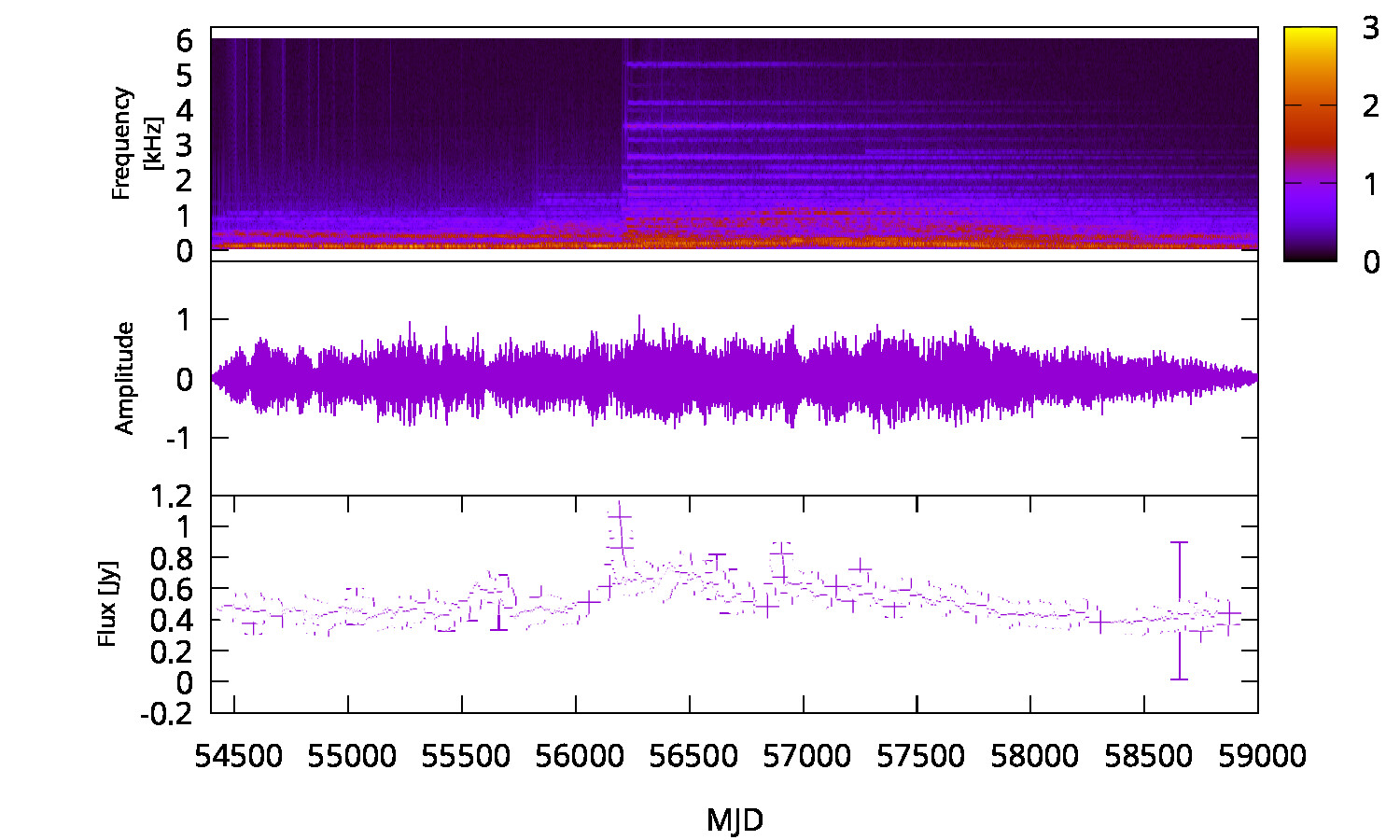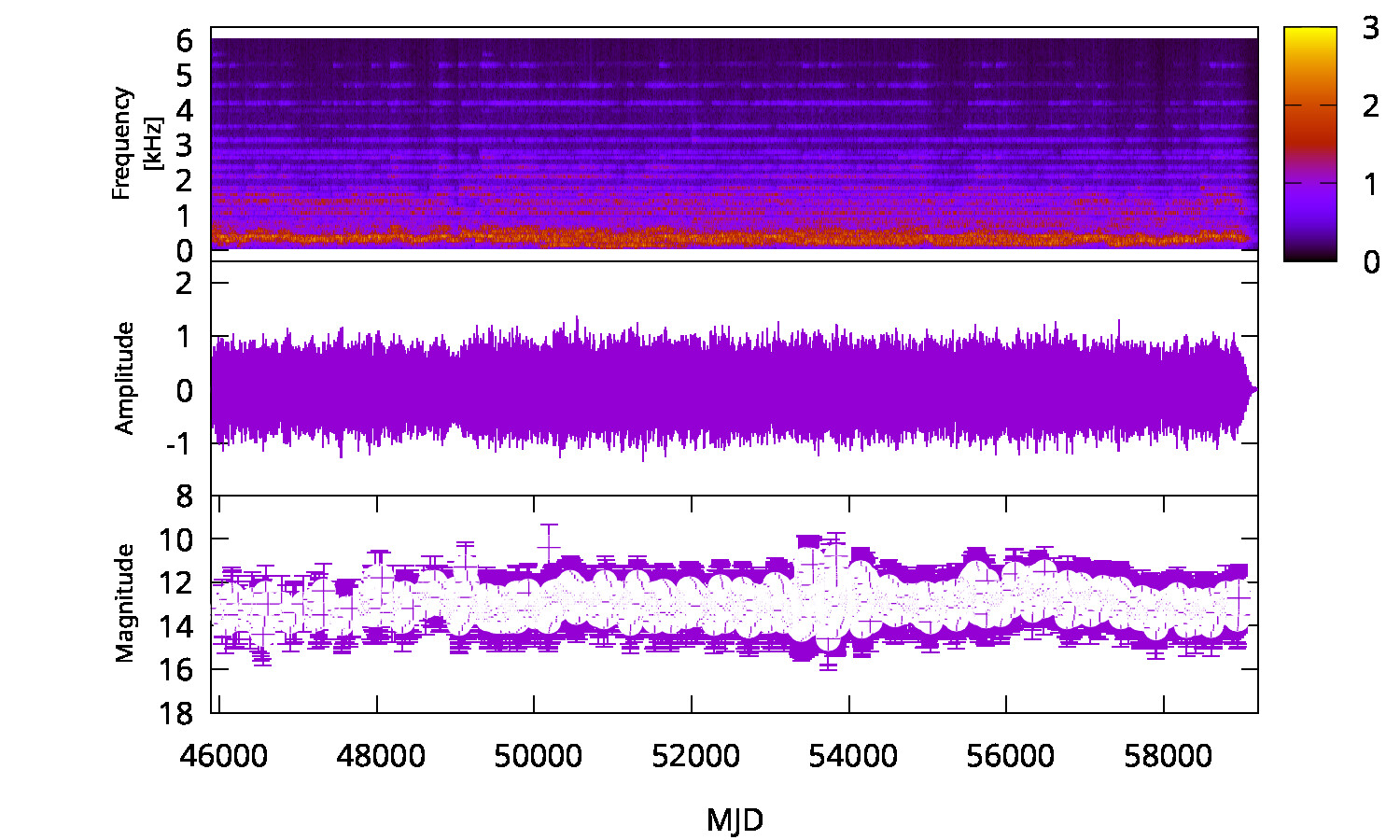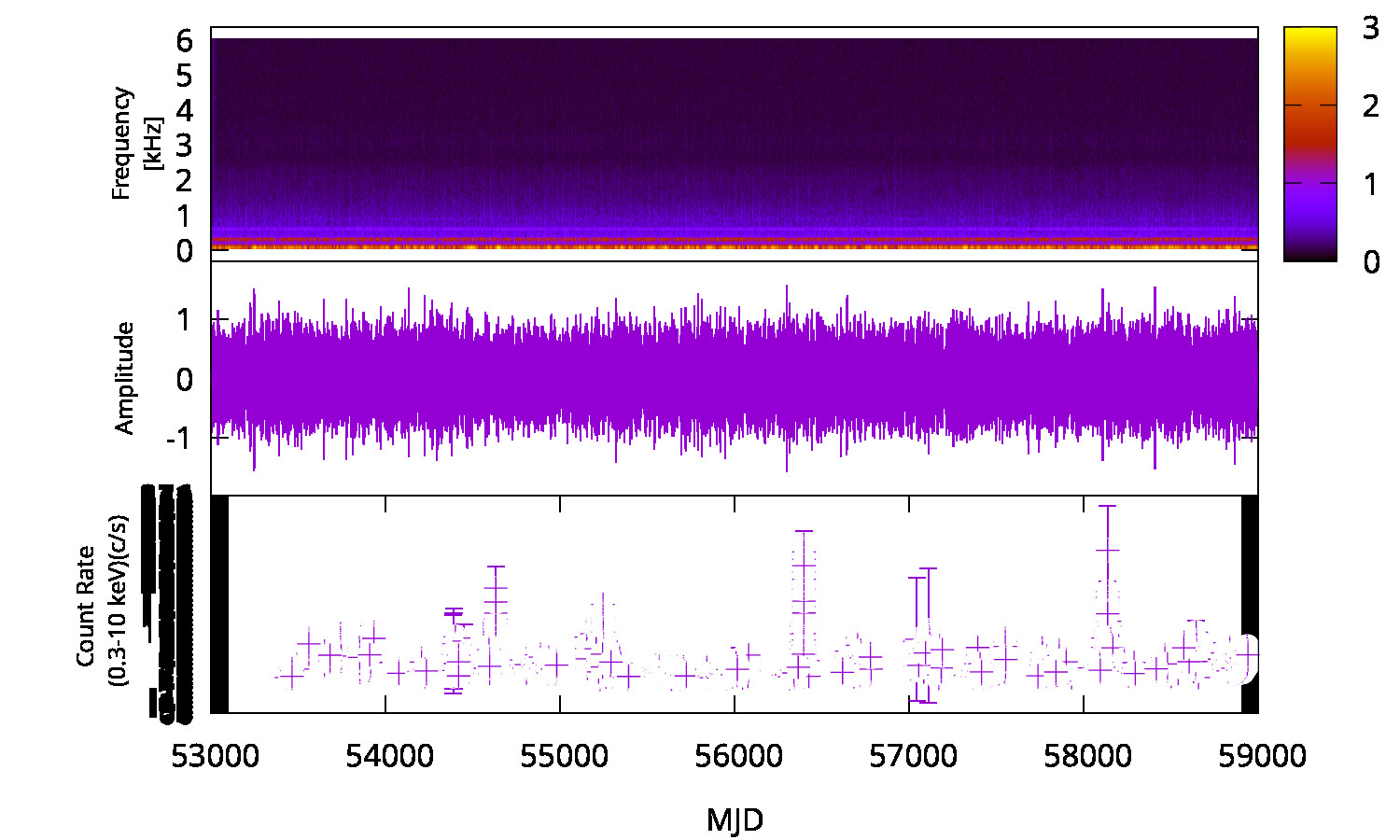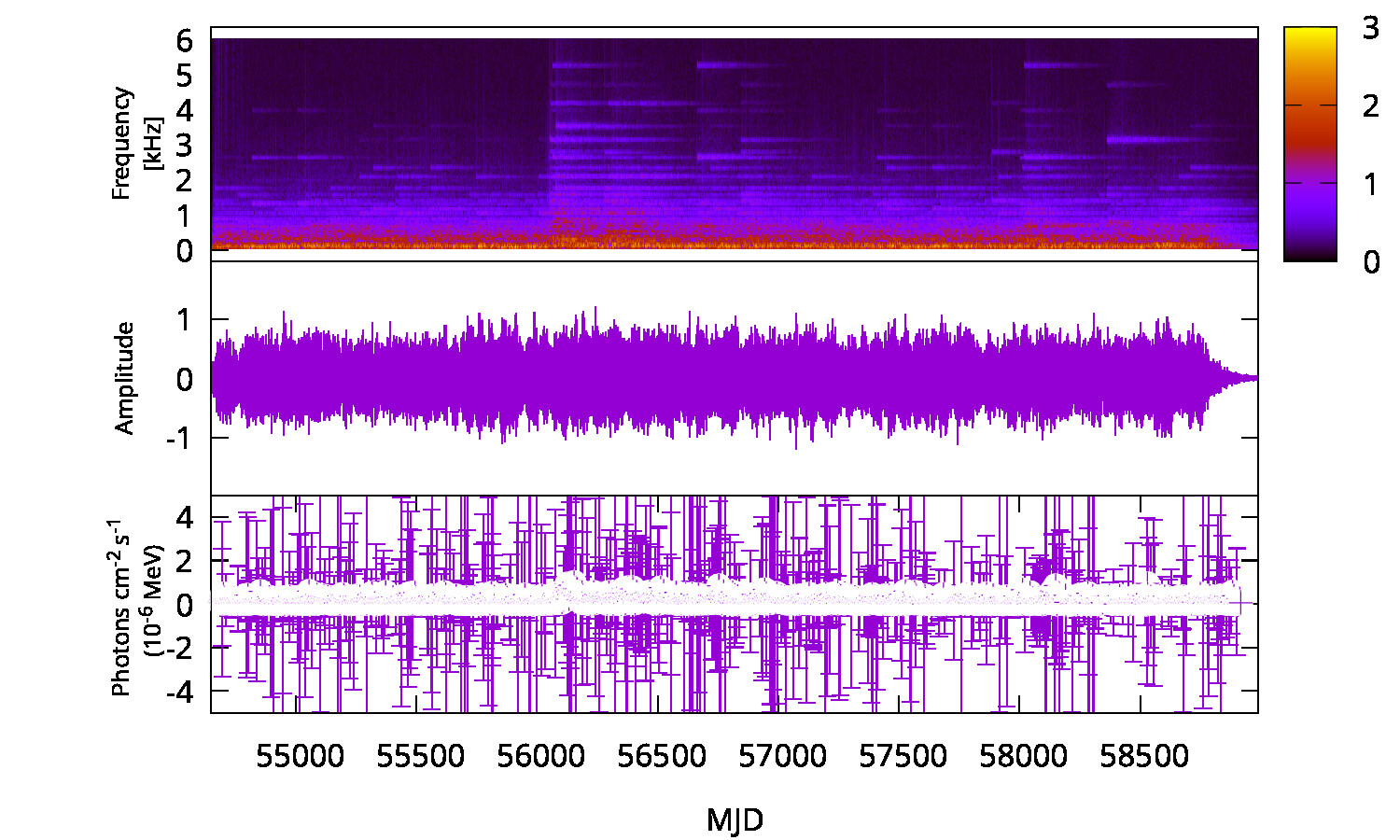

Markarian 421
Markarian 421 has a α = 11 h 04 m 27 31 s, and δ = 38°12’ 31.80”, located at z =0.031 (Ulrich et al. 1975) and with the BH mass of 3.2 ×108M⊙ (Falomo et al. 2002), showing rapid flux and polarization variability (e. g., Fraija et al. 2017).

Sloan Digital Sky Survey image of Mrk 421
The figure shows panels of radio, optical, X-ray, and Gamma-ray light curves, waveforms of the sonification as a function of time, and spectrograms of the blazar Mrk 421. The light curves are available at: Download Light curves.
Instructions
1. Listen to the audio using the Play/Pause button.
2. Use the Solo option to enable or disable one or more audio tracks.
3. You can listen to each audio individually, but you can also combine them by toggling the Mute/Solo button.
References
- Ulrich, M. H., Kinman, T. D., Lynds, C. R., Rieke, G. H., & Ekers, R. D. (1975). Nonthermal continuum radiation in three elliptical galaxies. The Astrophysical Journal, 198, 261-266.
- Valtonen, M. J., Nilsson, K., Sillanpää, A., Takalo, L. O., Lehto, H. J., Keel, W. C., ... & Mattingly, A. (2006). The 2005 November outburst in OJ 287 and the binary black hole model. The Astrophysical Journal, 643(1), L9.
- Falomo, R., Kotilainen, J. K., & Treves, A. (2002). The black hole mass of BL Lacertae objects from the stellar velocity dispersion of the host galaxy. The Astrophysical Journal, 569(1), L35.
- Fraija, N., Benítez, E., Hiriart, D., Sorcia, M., López, J. M., Mújica, R., ... & Galván-Gámez, A. (2017). Long-term optical polarization variability and multiwavelength analysis of Blazar Mrk 421. The Astrophysical Journal Supplement Series, 232(1), 7.





